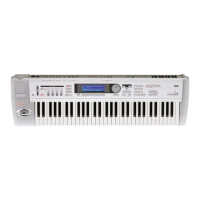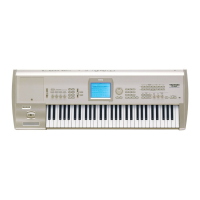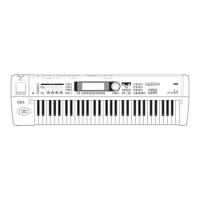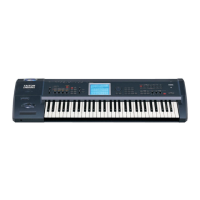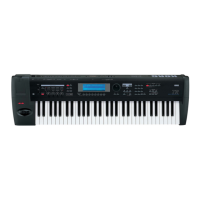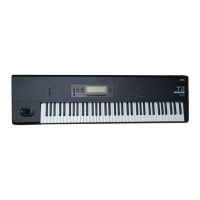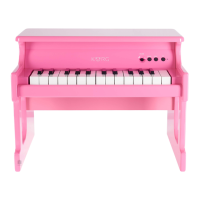4. About the performance functions
17
STEP 2
4. About the performance functions
The pitch, tone, volume, and effects of the TRINITY can be controlled by controllers (joystick, rib-
bon controller, connected pedals, etc.) and by the way in which you play the keyboard. These
means of control are referred to as “performance functions.” In the various Edit modes, you can
specify the amount of control for each parameter of the oscillator, filter, and amp sections, and
select dynamic modulation sources for alternate modulation or effects.
Control from the keyboard
Velocity
The force with which you play the keyboard can control the sound. Normally, velocity is used to
control volume, EG speed, or sensitivity, etc.
After Touch
Pressure applied to the keyboard after playing a note can control the sound. Normally, aftertouch
is used to control volume, tone (cutoff frequency), or LFO sensitivity, etc.
Note Number
The note number (location on the keyboard) can affect the sound. Normally, note number is used
to control volume, tone (cutoff frequency), or LFO sensitivity, etc.
Control from the Joy Stick, Ribbon Controller, SW 1/2, and
VALUE slider
Joy Stick
JS(–Y): An effect can be applied by moving the joystick toward you.
Normally this is used to control filter LFO (wah-wah).
Ribbon Controller
SW1, SW2
These functions can be assigned independently for each program, combination, and song. In other
words, the functions that are assigned to SW1 and SW2 will depend on the currently selected pro-
gram, combination or song.
JS(+X): An effect can be applied by moving the joystick
toward the right.
Normally this is used to control pitch.
JS(–X): An effect can be applied by moving the joystick toward
the left.
Normally this is used to control pitch.
JS(+Y): An effect can be applied by moving the joystick away
from you.
Normally this is used to control oscillator LFO (vibrato).
Ribbon (X): An effect can be applied by moving
your finger to the left or right on the ribbon con-
troller. Normally this is used to control pitch. The
pitch will be normal at the center of the ribbon
controller.
Ribbon (Z): An effect can be applied by pressing
down on the ribbon controller.
The function of SW1 and SW2 on the front panel can be selected in
Program Edit mode P1 “1–1: Prog Basic”, in Combination Edit mode
P4 “4–1: Filter”, or in Sequencer mode P4 “4–1(2): Filter.” This setting
allows SW1 and SW2 to be used to lock (hold) various controllers (joy-
stick, ribbon controller, etc.) or to turn on/off effects or portamento
(the LED will light when the switch is on).
+Y
–X
+X
–Y
XX
Z
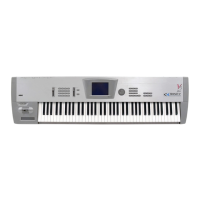
